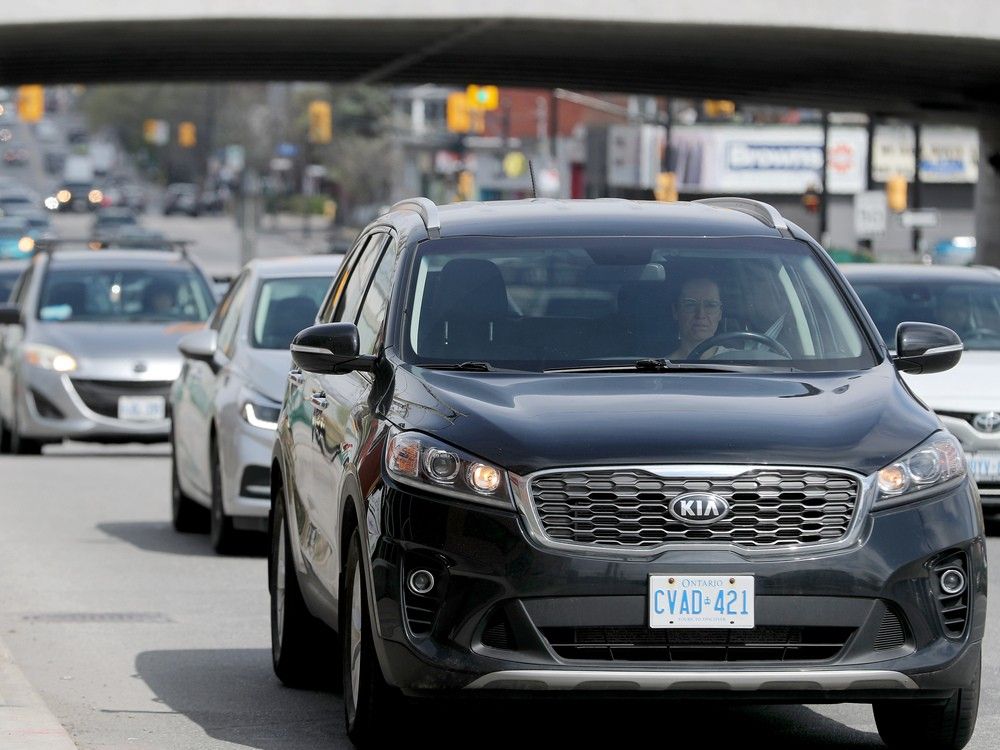The city’s finalized Transportation Master Plan passed through Ottawa council this week with a plan that sets out transit and road priorities for the next 20 years, but notably excludes a ring road that had been raised at the “11th hour.”
College Coun. Laine Johnson introduced a motion at the July 23 council session to “refocus the city’s priorities … (and) make sure we have a clear direction for council and for staff to pursue.”
The TMP “should not have the endorsement of any plan not contemplated by the province,” such as a ring road, Johnson said.
The motion called on all levels of government “to prioritize sustainable, data-driven transportation infrastructure investments” and directed city staff to “engage with provincial and federal counterparts to obtain up-to-date information on their respective projects in order to assess any impact to projects identified in the TMP.”
The motion passed with a 16-8 vote, with notable dissent from Beacon Hill-Cyrville Coun. Tim Tierney, who had raised the idea of a ring road instead of a
sixth interprovincial bridge at Kettle Island
.
Tierney’s suggestion for a ring road was raised at the June 26 session of the public works and infrastructure committee, which approved the TMP and initially gave support to Tierney’s motion by a 9-2 vote.
Several committee members changed their vote as the TMP was brought forward to council.
Johnson said in a July 23 social-media post that her motion was designed “to correct what I considered to be a misstep made during the final minutes of the last public meeting about the plan, which was an eleventh-hour motion to offer specific support to a ring road for Ottawa.”
City staff and councillors have been working for six years on the TMP, Johnson wrote.
“We have had surveys, public meetings, consultations with stakeholder groups. Meeting after meeting with our city staff … millions of tax dollars spent on consultant studies, origin-destination studies and public engagement.
“Yet through all of that at no time did we hear about the concept of a ring road. Although it’s not a new idea, it is an old idea being made new again, but councils then and since have rejected it.”
The TMP builds on previous plans completed in 2003, 2008 and 2013, and was developed based on extensive public feedback, according to city staff.
The document establishes priorities and will guide development of the city’s transportation system until 2046.
It projects an increase of more than 400,000 residents in Ottawa over the next 20 years and “identifies transportation policies and infrastructure investments to support that growth,” staff said.
Tierney said exclusion of a ring road to divert truck and passenger traffic around the city — rather than further congesting the main east-west artery of Highway 417 — was a “major miss.”
“We have an opportunity that we missed in the past. I’ve heard time and again since we’ve had this discussion that traffic is seven days a week,” Tierney said.
While the first part of the TMP focused on urban and inner-city areas, the second part “is about roads, rural (areas) and connectivity throughout the city,” Tierney said.
A ring road corridor “could help assist major issues that are happening in many of our rural villages where we have transport trucks driving through the middle of (town),” he said.
“We don’t need another interprovincial bridge that is going to see thousands more vehicles come onto the highway to cut through the middle of our city. And, every time there is an accident, it bleeds out into the downtown area. It really affects the urban area just as much as the rural (areas).
“We need alternatives in this city … and, if we don’t address it in this (council) term, we may have to take care of it next term.”
Vivi Chi, the city’s general manager of planning, real estate and economic development, told Tierney that Ontario’s Ministry of Transportation did identify a feasibility study into a ring road as one of many potential projects for Ottawa.
“It’s (the province’s) initiative, so they will select the timing and the funding for the study, and, if there’s implementation, they would be responsible for that,” Chi said.
City staff would “definitely be at the table” if such a study was initiated, Chi said.
The city’s priority road and transit networks include $3.9 billion in city-led capital projects, including $2.3 billion in transit projects and $1.6 billion in road projects.
Priorities include expansion of light-rail transit to Barrhaven and Kanata, a median bus transitway along Baseline Road, widening north-south arteries like the Airport Parkway and numerous modifications to the existing roads and transit network.
The process for drafting the TMP began in 2018 and has so far cost $1.5 million in consultant studies, city staff told council.
Orléans South-Navan Coun. Catherine Kitts pointed to the impact of numerous “booming” communities outside the city’s urban boundary.
“Quite frankly we are being strangled by the growth of our neighbouring municipalities and it’s time to start having a serious conversation about how growth and transportation is being managed outside the limits of the City of Ottawa,” she said.
Kitts said the transportation situation in her ward was “deeply impacting the quality of life … The roads are over-capacity, the transit is inadequate and active transportation is either absent or unsafe.”
She said the finalized TMP represented “a big step forward and (was) moving the needle in a pivotal way for how growth is managed in our city.”



